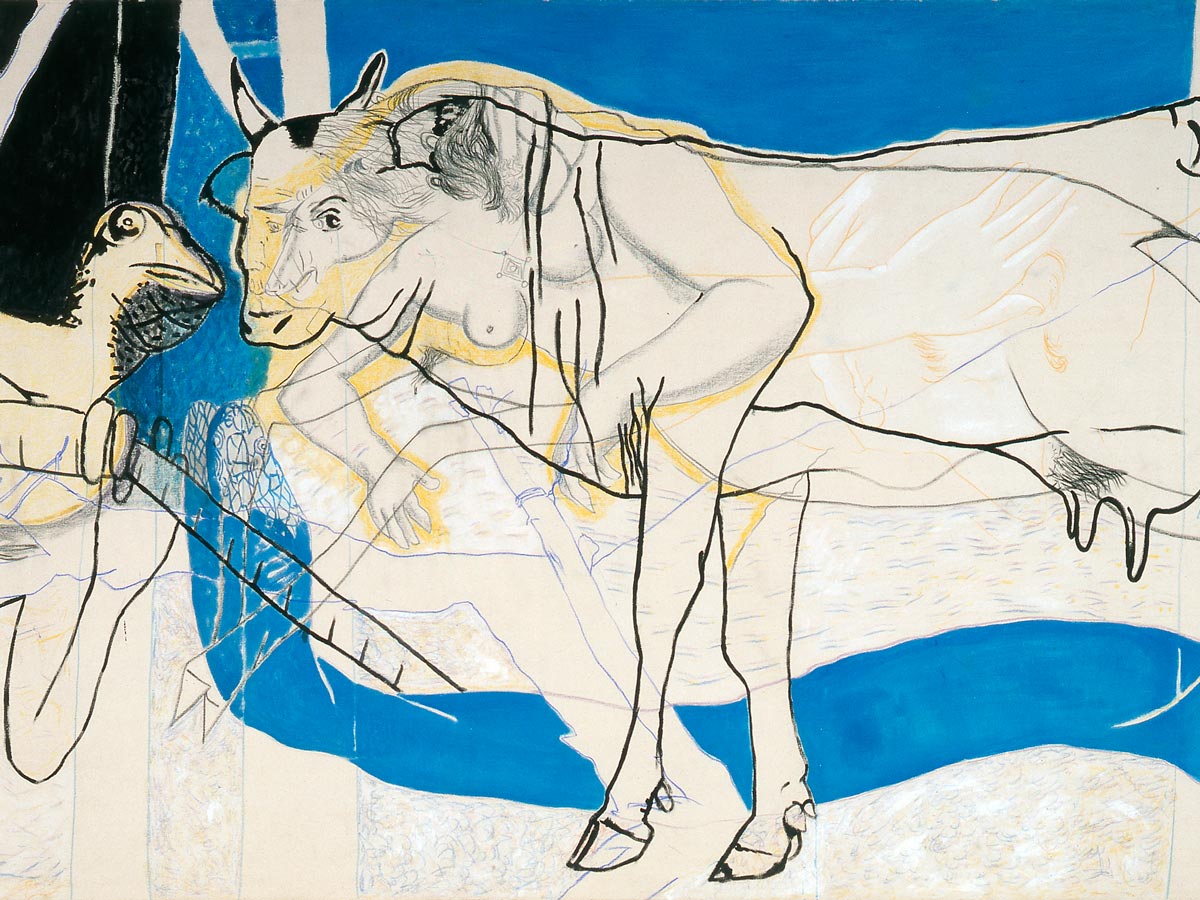Work by Graça Morais in the Centro de Arte Contemporânea Graça Morais

The exhibition Graça Morais: Mapas da Terra e do Tempo (Graça Morais: Maps of Land and Time), which was held last year in the Museu do Côa, has travelled to the Centro de Arte Contemporânea Graça Morais, in Bragança, where it will be on display until June this year. Curated by Jorge da Costa, this exhibition brings together around 50 works by the artist, inspired by the Palaeolithic period.
The relationship between Graça Morais’ work and primitive art emerged early on: as a child, the artist had the habit of drawing on the rocks of her native village, Vieiro, in the Trás-os-Montes region. When the campaign to protect the rock engravings found in the Côa valley was launched, the artist immediately joined the cause.
Throughout her 50-year career, this art form has influenced her way of drawing and painting. The works selected for this exhibition were based on figures such as the enigmatic ‘man-bison,’ more than 14 thousand years old, found in the Les Trois-Frères cave, in France, and used by the artist in the scenery for Jean Genet’s play The Screens, in a 1993 run at the Teatro Experimental de Cascais.
The presence of an art form regarded as primitive can be found in many of the artist’s works, in particular the pieces from the 1980s and 90s, including Mapas e o Espírito da Oliveira, the work from the CAM Collection which is on display in the exhibition. This work, created in 1984, along with other paintings and drawings using canvas as a support, was presented in São Paulo the same year and in Rio de Janeiro a year later.
The work was acquired directly from the artist for the CAM Collection in 1985.